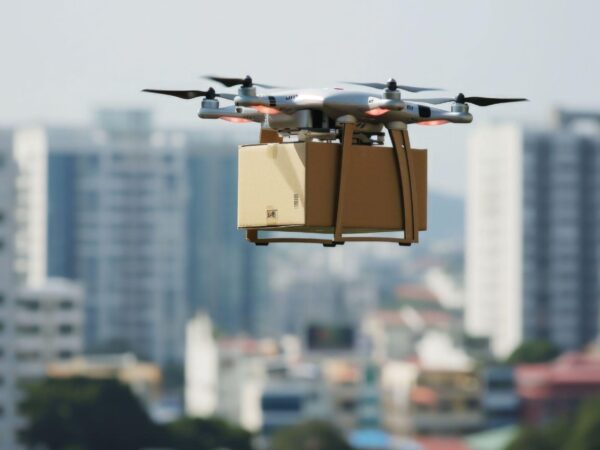Which Is The Best Option For IoT Security?
The Internet of Things (IoT) has witnessed unprecedented growth over the past few years. According to the latest report by IoT Analytics, “There has been a considerable transition from non-IoT to IoT devices over the past decade. In fact, 75% of all devices are expected to be IoT by 2030.”
Security has become a major concern with more devices getting connected to IoT Platforms through the internet. Choosing the right communication technology is essential to secure communication between IoT devices and networks.
Two popular options for IoT communication are Narrowband-IoT (NB-IoT) and Long Range Wide Area Networks (LoRaWAN). In this blog post, we’ll understand both technologies in detail and compare the two options that will assist you in making the right choice for your IoT security requirements.
Understanding NB-IoT
Narrowband-IoT (NB-IoT) is a low-power, wide-area (LPWA) technology designed specifically for IoT devices. NB-IoT offers several benefits for IoT security, including
Strong authentication and encryption for secure communication
Higher reliability and lower latency than traditional cellular networks
Low power consumption, which extends the battery life of IoT devices
Good coverage, even in hard-to-reach areas.
However, there are also some limitations to NB-IoT. For example,
It requires a larger network infrastructure than other LPWA technologies
It may be more expensive than other options
Understanding LoRaWAN
LoRaWAN is another LPWA technology designed to provide long-range connectivity for IoT devices. LoRaWAN offers many advantages for IoT security, including
Low power consumption, which extends battery life for IoT devices
Excellent coverage, even in remote or hard-to-reach areas
Low cost, which makes it an attractive option for smaller-scale IoT projects
However, there are also some limitations to LoRaWAN. For example,
It can have longer latency times than other LPWA technologies
Comparison between NB-IoT and LoRaWAN for IoT security
Both NB-IoT and LoRaWAN have their advantages and disadvantages regarding IoT security. Here are a few important factors to consider when comparing the two options:
Security Features
NB-IoT, based on cellular technology, provides strong authentication and encryption to protect data in transit. This is because NB-IoT uses SIM cards for device authentication and encrypts data with advanced encryption standards (AES) before it’s transmitted.
On the other hand, LoRaWAN provides a lower level of security than NB-IoT. LoRaWAN doesn’t rely on SIM cards and has less advanced authentication mechanisms. LoRaWAN uses the Advanced Encryption Standard (AES) to encrypt data at a lower level of encryption.
Network Infrastructure
NB-IoT requires a larger network infrastructure since it uses cellular technology and thus needs to rely on cell towers to connect devices to the internet. This can result in higher infrastructure costs, especially for small-scale projects.
In contrast, LoRaWAN doesn’t require as much infrastructure since it operates on a Low-Power Wide Area Network (LPWAN), which can connect devices over long distances with a single gateway.
Power Consumption and Battery Life
When it comes to power consumption and battery life, LoRaWAN has the upper hand.
LoRaWAN is designed to be energy-efficient, which means that it requires less power and can run on batteries for extended periods. LoRaWAN uses a low-bandwidth, high-range network that can transmit data over long distances without too much energy.
NB-IoT, on the other hand, requires more power than LoRaWAN due to the infrastructure required to support cellular technology. However, it is still relatively power-efficient compared to other cellular technologies, such as 2G or 3G.
Range and Coverage
NB-IoT is designed to have good coverage, but its range is shorter than that of LoRaWAN. This means that it is better suited for use in urban areas with a higher density of cellular towers.
LoRaWAN, on the other hand, has a more extended range and better coverage than NB-IoT. This is because it can transmit data over long distances, making it better suited for use in rural areas.
Cost and Scalability
NB-IoT is typically more expensive than LoRaWAN, especially for small-scale projects. This is due to the infrastructure requirements for cellular technology.
LoRaWAN, on the other hand, is less costly and more scalable than NB-IoT, making it a better choice for smaller-scale projects. LoRaWAN operates on an open standard that allows easy integration with existing infrastructure.
| Factors | NB-IoT | LoRaWAN |
| Security Features | Strong authentication and encryption | Lower level of security |
| Network Infrastructure | Requires a larger network infrastructure | Less infrastructure required |
| Power Consumption and Battery Life | Lower power consumption but requires more power than LoRaWAN | Low power consumption |
| Range and Coverage | Good coverage but shorter range than LoRaWAN | Good coverage and longer range |
| Cost and Scalability | More expensive and less scalable for smaller-scale projects | Less expensive and more scalable for smaller-scale projects |
It’s important to note that the best option for IoT security depends on the specific needs and goals of your IoT project.
Conclusion
Choosing the right communication technology is essential for ensuring the security of your IoT devices and networks. NB-IoT and LoRaWAN are both popular options for IoT communication, but they have different strengths and weaknesses.
Regarding IoT security, it is important to consider factors such as security features, network infrastructure, power consumption, range and coverage, and cost and scalability. You can decide the best option for your IoT security needs by carefully weighing these factors. As IoT technology evolves, we expect to see even more communication options for IoT devices that prioritize security, cost-effectiveness, and scalability.
Visit www.akenza.io and www.akenza.io/iot-solutions to learn more.




